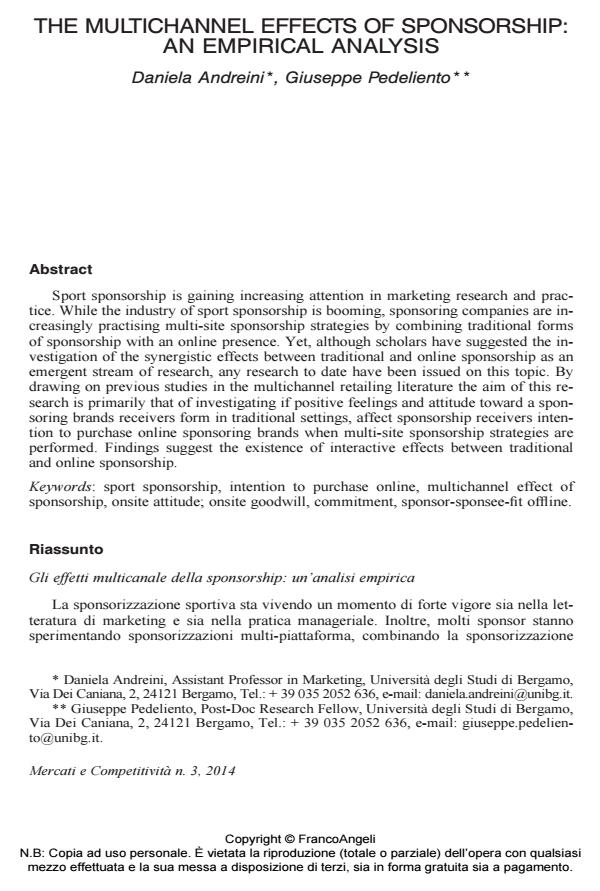The multichannel effects of sponsorship: an empirical analysis
Journal title MERCATI E COMPETITIVITÀ
Author/s Daniela Andreini, Giuseppe Pedeliento
Publishing Year 2014 Issue 2014/3
Language English Pages 19 P. 65-83 File size 113 KB
DOI 10.3280/MC2014-003005
DOI is like a bar code for intellectual property: to have more infomation
click here
Below, you can see the article first page
If you want to buy this article in PDF format, you can do it, following the instructions to buy download credits

FrancoAngeli is member of Publishers International Linking Association, Inc (PILA), a not-for-profit association which run the CrossRef service enabling links to and from online scholarly content.
Sport sponsorship is gaining increasing attention in marketing research and practice. While the industry of sport sponsorship is booming, sponsoring companies are increasingly practising multi-site sponsorship strategies by combining traditional forms of sponsorship with an online presence. Yet, although scholars have suggested the investigation of the synergistic effects between traditional and online sponsorship as an emergent stream of research, any research to date have been issued on this topic. By drawing on previous studies in the multichannel retailing literature the aim of this research is primarily that of investigating if positive feelings and attitude toward a sponsoring brands receivers form in traditional settings, affect sponsorship receivers intention to purchase online sponsoring brands when multi-site sponsorship strategies are performed. Findings suggest the existence of interactive effects between traditional and online sponsorship.
Keywords: Sport sponsorship, intention to purchase online, multichannel effect of sponsorship, onsite attitude; onsite goodwill, commitment, sponsor-sponsee-fit offline.
Daniela Andreini, Giuseppe Pedeliento, The multichannel effects of sponsorship: an empirical analysis in "MERCATI E COMPETITIVITÀ" 3/2014, pp 65-83, DOI: 10.3280/MC2014-003005